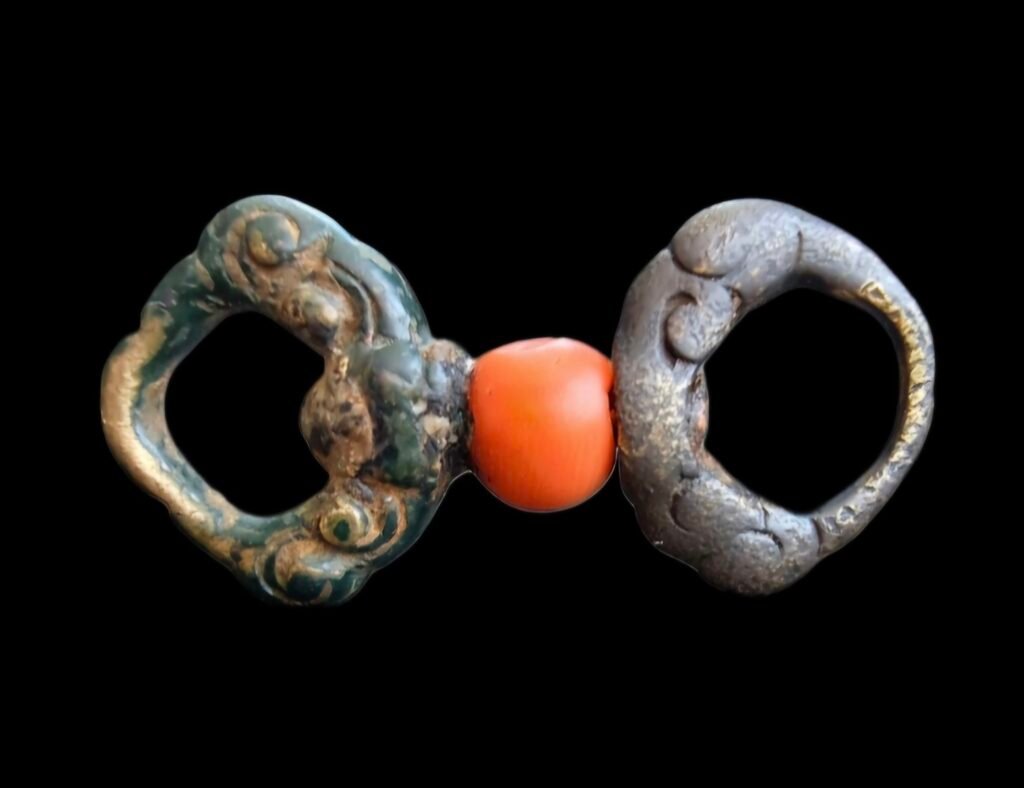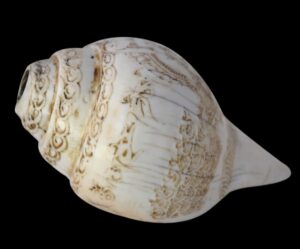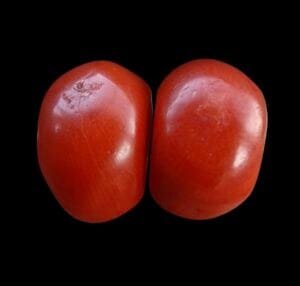Introduction to Thogchag: Ancient Tibetan Amulets of Power
Thogchag, also known as “thokcha” or “thog-lcags” in Tibetan, are ancient amulets revered for their mystical properties and deep cultural significance in Tibetan and Himalayan societies. These small, weathered metal objects, often with intricate designs, have been treasured for centuries as powerful talismans believed to offer protection, luck, and spiritual benefits to their wearers.
The Origins of Thogchag
The history of Thogchag is as enigmatic as the objects themselves. The name “thogchag” is derived from two Tibetan words: “thog,” meaning “thunderbolt” or “heavenly,” and “chag,” meaning “iron” or “metal.” This reflects the traditional belief that these objects are of celestial origin, fallen from the sky, or created by lightning strikes. Some believe that Thogchags were forged in ancient times from meteoric iron, further enhancing their sacred status.
Thogchags date back over a thousand years, with some experts suggesting they could be as old as the Bronze Age. The earliest Thogchags were likely created as religious or ritual objects, with designs that included Buddhist symbols, deities, and animals, reflecting the spiritual beliefs of the time. Over centuries, they evolved into powerful amulets, passed down through generations, and cherished for their supposed protective and healing powers.
The Crafting and Symbolism of Thogchag
The exact methods used to create Thogchags remain largely unknown, adding to their aura of mystery. Traditionally, they are made from bronze or copper alloys, sometimes with traces of other metals, and are often found in the form of small figurines, plaques, or pendants. Each Thogchag is unique, with designs that can range from simple geometric patterns to complex depictions of deities, animals, or auspicious symbols such as the dorje (vajra), stupas, or mythical creatures.
The symbolic meaning of a Thogchag is closely tied to its design. For example, a Thogchag depicting the vajra, a symbol of indestructibility and spiritual power in Buddhism, is believed to offer protection from negative forces. Other designs, such as those featuring the mythical snow lion or dragon, are thought to bring strength, courage, and good fortune.
One of the most intriguing aspects of Thogchags is their weathered appearance, often marked by centuries of wear. This patina, along with the belief that Thogchags possess inherent spiritual energy, makes them highly prized. Collectors and spiritual practitioners alike seek out these amulets, not only for their beauty and rarity but also for the sense of connection to ancient traditions and the spiritual world they represent.
Thogchag in Tibetan Culture
In Tibetan culture, Thogchags are more than just decorative objects; they are deeply integrated into the spiritual and daily lives of the people. They are often worn as personal amulets, carried for protection against evil spirits, or placed in homes and altars to bring blessings and positive energy. Thogchags are also used in various rituals, including those performed by Tibetan shamans or lamas, who believe in their ability to connect the physical and spiritual realms.
The belief in the power of Thogchag is so strong that even damaged or broken pieces are considered valuable. These worn amulets are thought to have absorbed the energy and prayers of their previous owners, making them even more potent as spiritual tools.
Today, genuine Thogchags are increasingly rare, and their value continues to rise. However, their significance goes beyond material worth. To the Tibetan people, Thogchags are timeless symbols of their rich cultural heritage, spiritual beliefs, and the enduring connection between the human and the divine.
Conclusion
Thogchag amulets are a fascinating window into the ancient spiritual practices of Tibet and the Himalayan region. Their mysterious origins, intricate designs, and profound cultural importance make them much more than mere artifacts—they are enduring symbols of protection, power, and the rich spiritual legacy of a bygone era. Whether worn for their believed mystical properties or cherished as historical treasures, Thogchags continue to captivate and inspire those who seek a deeper understanding of Tibetan culture and spirituality.







Thanks for sharing. I read many of your blog posts, cool, your blog is very good.
Thank you for your sharing. I am worried that I lack creative ideas. It is your article that makes me full of hope. Thank you. But, I have a question, can you help me?
Thanks for sharing. I read many of your blog posts, cool, your blog is very good.
Reading your article helped me a lot and I agree with you. But I still have some doubts, can you clarify for me? I’ll keep an eye out for your answers.
Thank you for your sharing. I am worried that I lack creative ideas. It is your article that makes me full of hope. Thank you. But, I have a question, can you help me?
Your article helped me a lot, is there any more related content? Thanks!
I don’t think the title of your article matches the content lol. Just kidding, mainly because I had some doubts after reading the article.
Your point of view caught my eye and was very interesting. Thanks. I have a question for you.
Your article helped me a lot, is there any more related content? Thanks!
Your point of view caught my eye and was very interesting. Thanks. I have a question for you.